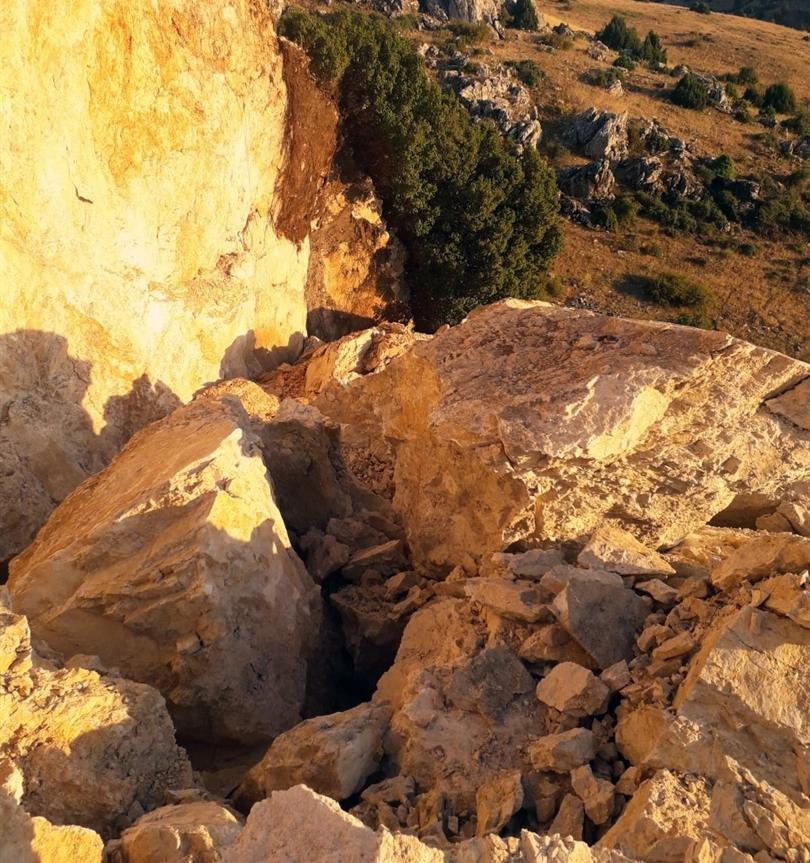Ancient symbolic rocks detonated by treasure hunters in Isparta
ISPARTA

Tons of rocks in the Mediterranean province of Isparta that hosted the Roman and late Byzantine periods were detonated by treasure hunters in search of historical artifacts.
The rock mass, known as Güvercinli Kaya, reaching 10 meters in height and believed to have had a symbolic importance, was detonated last week with a dynamite in a village in Yalvaç district.
Treasure hunters, who were deemed to have exploded the rocks without drawing attention due to the presence of marble quarries in the area, could not find any historical artifacts.
“Illicit diggings have been made with construction vehicles in the past, but they could not go that far,” said Süleyman Karakoyun, former muhtar of Yukarı (Upper) Tırtar village, emphasizing that myths have indicated that under the rock there was a tomb of a king.
Karakoyun urged officials to take action and demand that those responsible be punished.
Mehmet Özhanlı, who has been conducting excavations in Pisidia Antiokheia ancient city in Yalvaç since 2008, noted that a city was established in the region in the late Byzantine period.
“My specialty is civilization history. I have never encountered such an ignorant roar in any period of civilization,” said Özhanlı, adding that the rock was the target of treasure hunters before.
Despite the precautions taken in Anatolia, which was home to many civilizations once, it is frequently damaged by treasure hunters who want to find historical artifacts.
Last year, a glacier lake which emerged in Turkey’s northeastern Gümüşhane province in the course of at least 12,000 years had been wiped off the map by an excavation triggered by an urban myth.
















